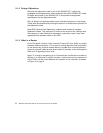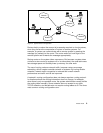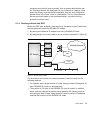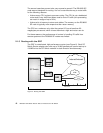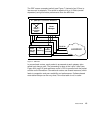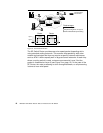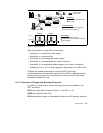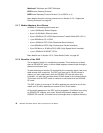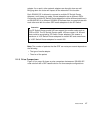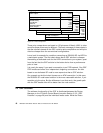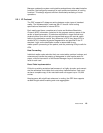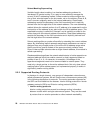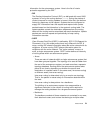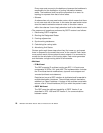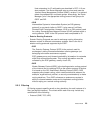16 IBM 9077 SP Switch Router: Get Connected to the SP Switch
MulticastIP Multicast and OSPF Multicast
EGPExterior Gateway Protocol
BGPBorder Gateway Protocol Version 3 or 4 (BGP 3 or 4)
More details about the various protocols are in Section 2.2.2, “Supported
Routing Protocols” on page 20.
2.1.7 Media Adapters At-a-Glance
Available IP forwarding media cards are:
• 1-port 100 Mbyte/s Switch Adapter
• 8-port 10/100 Mbit/s Ethernet cards
• 2-port 155 Mbit/s OC-3 ATM (Asynchronous Transfer Mode UNI 3.0/3.1)
• 1-port 622 Mbit/s OC-12 ATM
• 4-port 100 Mbit/s FDDI (Fiber Distributed Data Interface)
• 1-port 800 Mbit/s HIPPI (High Performance Parallel Interface)
• 2-port 52 Mbit/s or 45 Mbit/s DS-3 HSSI (High Speed Serial Interface)
• 1-port 155 Mbit/s IP/SONET OC-3c
More details are in Section 2.3.8, “Other Media Cards” on page 39.
2.1.8 Benefits of the GRF
The crosspoint switch is a
nonblocking crossbar
. This architecture is faster
than an RS/6000 SP node, in which media adapters communicate through a
shared microchannel bus.
To take advantage of the fast I/O provided by the crosspoint switch, fast route
table access time is required. The GRF can store up to 150,000 routes in
memory on each media card, while an RS/6000 SP node can store only
hundreds. It is said that you need about 50,000 routes for the whole Internet.
This means that the GRF is able to retrieve a route faster than an RS/6000
SP node.
The GRF is able to route up to 2.8 million packets per second for the 4-slot
model and 10 million packets per second for the 16-slot model.
All the media adapters on the GRF are hot-pluggable. This differs from using
an RS/6000 SP node as your router. Should any network adapter on the
RS/6000 SP node fail, the node has to be brought down to replace the faulty



